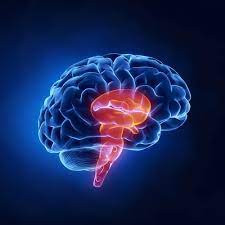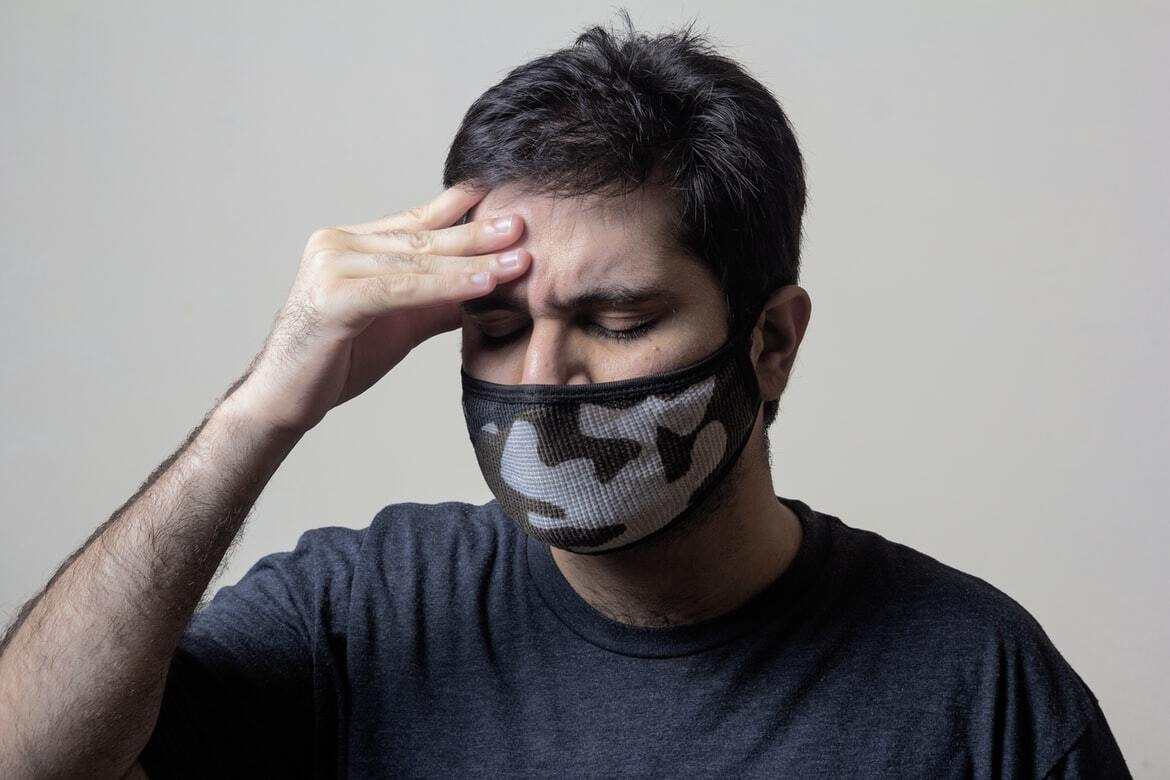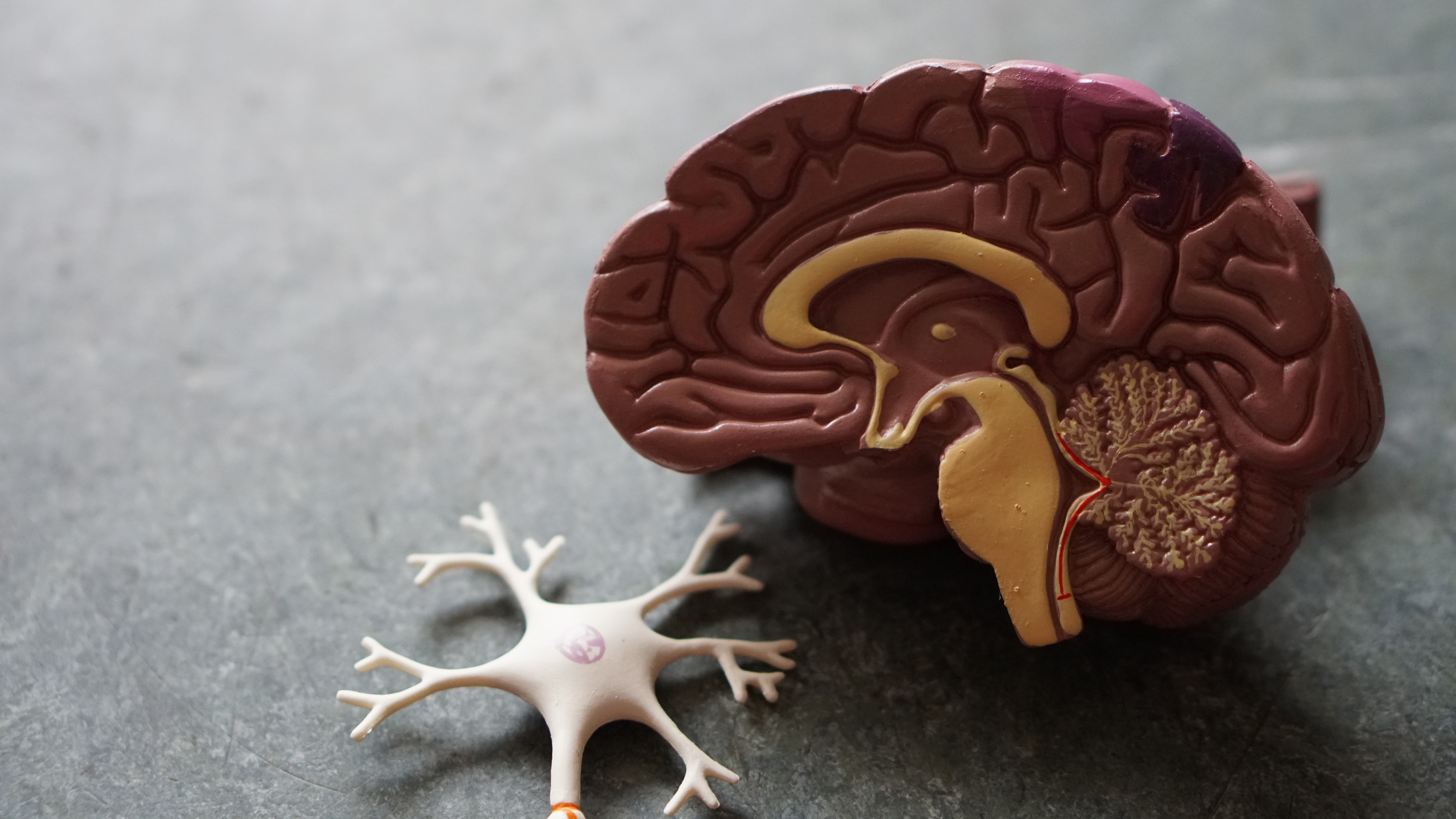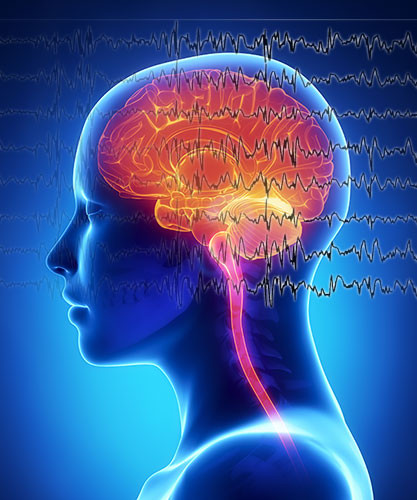Definisi
Lesi batang otak adalah gangguan pada jaringan batang otak, meliputi gangguan pembuluh darah, tumor, atau peradangan. Gangguan pembuluh darah yang paling sering adalah stroke. Tumor yang banyak ditemukan pada batang otak adalah glioma. Sementara peradangan yang dapat terjadi pada batang otak adalah ensefalitis dan sklerosis multipel.
Batang otak adalah bagian otak yang menyatu dengan sumsum tulang belakang dan menjadi jalur informasi dua arah antara otak, sumsum tulang belakang, dan saraf perifer (tepi). Batang otak terdiri dari medula oblongata, otak tengah, dan pons. Sebagian besar saraf kranial, yaitu saraf yang berasal dari otak, keluar dari batang otak.
Batang otak berfungsi untuk mengatur gerakan mata, sensasi wajah, gerakan wajah, dan fungsi dasar tubuh untuk bertahan hidup seperti bernapas, menelan, detak jantung, tekanan darah, dan kesadaran.
Penyebab
Lesi batang otak yang umum adalah stroke. Stroke terjadi ketika suplai darah ke batang otak terganggu. Kehidupan manusia bergantung pada fungsi batang otak untuk bertahan hidup. Sehingga, stroke batang otak dapat mengganggu fungsi-fungsi penting tubuh, bahkan mengancam jiwa.
Pada jenis stroke iskemik (sumbatan), sel otak kekurangan pasokan oksigen karena aliran darah tidak sampai ke sel tersebut. Terhambatnya aliran darah dapat disebabkan oleh gumpalan darah atau kolesterol. Gumpalan yang terbentuk di tempat lain dapat berjalan ke pembuluh darah otak. Jenis stroke lainnya adalah stroke hemoragik (perdarahan) karena pecahnya pembuluh darah. Darah yang keluar dan terkumpul di jaringan otak akan meningkatkan tekanan di dalam otak.
Penyebab lesi batang otak berikutnya adalah glioma, yaitu tumor jaringan saraf di batang otak. Sekitar 60% kasus terjadi pada pons. Sisanya dapat muncul pada otak tengah atau medula, dan dapat juga tumbuh di luar batang otak. Glioma menyumbang sekitar 20% dari semua tumor otak primer anak, namun kurang dari 2% dari semua glioma pada dewasa.
Ensefalitis adalah salah satu penyebab lesi batang otak. Ensefalitis dapat disebabkan oleh proses infeksi atau autoimun. Pada ensefalitis, terjadi peradangan sel batang otak. Peradangan ini umumnya dapat pulih kembali dengan terapi yang tepat. Munculnya demam pada pasien dengan gangguan imun harus selalu diwaspadai sebagai infeksi.
Ensefalitis batang otak Bickerstaff (BBE) adalah penyakit autoimun yang jarang terjadi pada sistem saraf, termasuk batang otak. Gejala khas BBE antara lain ataksia (gangguan koordinasi gerak), ensefalopati (perubahan fungsi atau struktur otak), dan oftalmoplegia (kelumpuhan otot mata).
Infeksi tersering yang berhubungan dengan BBE adalah infeksi bakteri Campylobacter jejuni dan Haemophilus influenzae. Selain itu, sebuah studi kasus telah melaporkan adanya episode BBE pada minggu pertama setelah infeksi Covid-19.
Penyebab lesi batang otak berikutnya adalah sklerosis multipel. Penyakit autoimun ini terutama memengaruhi bagian putih batang otak, yaitu bagian yang terdiri dari saraf-saraf bermielin tebal. Lapisan mielin adalah lapisan lemak pembungkus saraf yang berfungsi mempercepat pengiriman informasi antar saraf. Saraf yang terganggu akan kehilangan lapisan mielinnya dan bekerja lambat hingga tidak berfungsi.
Faktor Risiko
Faktor risiko lesi batang otak akibat stroke antara lain:
- Riwayat keluarga stroke atau serangan iskemik transien (mini-stroke)
- Usia di atas 65 tahun
- Laki-laki
- Keturunan Afrika-Amerika, Hispanik, Asia, atau Kepulauan Pasifik
- Tekanan darah tinggi
- Kolesterol tinggi
- Diabetes
- Penyakit jantung dan pembuluh darah
- Kelainan darah tertentu
- Kanker
- Penyakit autoimun
- Merokok
- Penyalahgunaan alkohol dan narkoba
- Wanita di atas usia 35 tahun, terutama yang merokok
- Penggunaan KB hormonal
Faktor risiko tumor pada batang otak bervariasi berdasarkan usia, jenis kelamin, kelompok etnis, dan negara. Beberapa laporan melaporkan kasus lebih banyak terjadi pada laki-laki. Sementara untuk faktor usia, sekitar tiga perempat pasien berusia kurang dari 20 tahun.
Gejala
Stroke pada batang otak dapat mengganggu fungsi vital seperti pernapasan, detak jantung, gerakan mata, menelan, bicara, dan mendengar. Stroke batang otak juga dapat menyebabkan vertigo, mati rasa pada satu atau kedua sisi tubuh, atau kelumpuhan pada lengan atau kaki.
Sklerosis multipel pada batang otak dapat menyebabkan gangguan motorik (gerak) maupun sensorik (merasakan rangsang). Gejala tersebut dapat serupa dengan gejala sklerosis multipel pada tulang belakang dan bagian otak lainnya karena lesi pada batang otak akan mengganggu jalur saraf yang menghubungkan ke bagian otak lainnya. Gejala tersebut antara lain:
- Gangguan kekuatan atau kontrol gerakan
- Bicara tidak jelas
- Penurunan sensasi sentuh, nyeri, suhu, dan getaran
- Penurunan keseimbangan
- Kesulitan tidur
Selain itu, keterlibatan batang otak pada sklerosis multipel dapat mengganggu fungsi saraf kranial, yang tidak terjadi di lokasi lain, seperti:
- Penglihatan ganda
- Gangguan pendengaran
- Penurunan indera pengecap
- Kelemahan otot wajah
- Gangguan menelan, termasuk tersedak atau batuk
- Nyeri wajah atau gangguan sensasi rangsang pada wajah
- Vertigo, atau pusing berputar
- Gangguan tekanan darah, detak jantung, atau pernapasan (jarang terjadi pada sklerosis multipel)
Sementara, gejala pada BBE biasanya muncul setelah episode gangguan saluran pernapasan atas atau infeksi gastrointestinal. Pasien umumnya mengalami oftalmoplegia dan ataksia dalam waktu empat minggu dengan tambahan adanya gangguan kesadaran. Gejala tersebut dapat sembuh spontan dalam 12 minggu.
Trias klasik oftalmoplegia, ataksia, dan ensefalitis sangat mengarah pada BBE. Namun, tidak adanya salah satu dari gejala ini atau adanya gejala tambahan bukan berarti dapat mengesampingkan diagnosis. Gejala lain yang juga dapat ditemukan pada BBE adalah gangguan bicara dan kelemahan tungkai.
Ensefalitis biasanya muncul dalam bentuk perubahan kesadaran (20% kasus) dengan tingkat keparahan mulai dari mengantuk ringan hingga koma.
Diagnosis
Dokter mendiagnosis lesi batang otak berdasarkan keluhan pasien, riwayat kesehatan, pemeriksaan fisik, dan pemeriksaan penunjang.
Pada stroke batang otak, setelah memeriksa riwayat kesehatan dan kondisi fisik, dokter akan melakukan pemeriksaan radiologi seperti MRI, CT scan, USG Doppler, atau angiogram. Tes fungsi jantung juga dilakukan termasuk elektrokardiogram dan ekokardiogram. Prosedur diagnostik tambahan seperti tes darah serta tes fungsi ginjal dan hati juga dapat membantu menegakkan diagnosis.
Pemeriksaan pada tumor glioma batang otak mencakup:
- MRI kepala. MRI kepala lebih akurat dibandingkan dengan CT scan. Namun, CT scan akan sangat berguna jika tidak tersedia MRI.
- Pemeriksaan cairan serebrospinal (CSF), yaitu cairan yang menyelimuti otak dan sumsum tulang belakang.
- Arteriografi, pemeriksaan pembuluh darah ini berguna untuk membedakan kelainan pembuluh darah lainnya dari glioma.
Diagnosis BBE sebagian besar bersifat klinis, meskipun tes laboratorium dan pencitraan dapat bermanfaat. Tes yang paling menentukan adalah analisis antibodi anti-GQlb dalam darah disertai gejala yang sesuai. Namun, tes antibodi yang negatif tidak menyingkirkan diagnosis.
Pemeriksaan EEG yang abnormal ditemukan pada 57% pasien BBE. Analisis cairan serebrospinal menunjukan peningkatan kadar protein dengan jumlah sel normal pada sekitar 25% pasien.
Karena banyak tanda dan gejala sklerosis multipel batang otak yang mirip dengan kelainan lainnya, tes diagnostik dapat membantu mengetahui lokasi kelainan. MRI otak dan tulang belakang sering digunakan untuk mendeteksi area saraf yang kehilangan mielin dan menentukan apakah ada kelainan lain.
Tata Laksana
Jika terjadi stroke iskemik, pengobatan tahap pertama adalah menghilangkan bekuan darah. Jika diagnosis cukup cepat, obat penghancur bekuan darah dapat diberikan. Jika memungkinkan, dapat dilakukan embolektomi, yaitu penghancuran bekuan darah menggunakan kateter pembuluh darah. Pada beberapa kasus, dilakukan pemasangan stent untuk memperlebar arteri dan menjaganya tetap terbuka.
Untuk stroke hemoragik, pendarahan harus dihentikan. Sebuah kumparan kawat halus dapat dipasang pada pembuluh darah yang pecah untuk menghentikan pendarahan. Obat untuk mengurangi pembekuan darah juga diperlukan. Tim medis juga akan menjaga fungsi jantung dan paru-paru pasien selama proses penanganan stroke.
Penanganan stroke memerlukan pengobatan dan terapi jangka panjang. Terapi fisik dapat membantu pasien melatih keterampilan geraknya. Terapi okupasi dapat membantu melakukan tugas sehari-hari. Sementara terapi wicara dapat melatih kemampuan berbicara dan menelan. Namun, beberapa orang yang selamat dari stroke batang otak ada yang mengalami kecacatan berat. Pada kasus ini, konseling psikologis dapat membantu pasien untuk menyesuaikan diri.
Terdapat obat yang dapat digunakan untuk mencegah kekambuhan sklerosis multipel dan mencegah kerusakan saraf jangka panjang. Terapi dan rehabilitasi juga akan membantu pasien mengoptimalkan kekuatan dan koordinasi geraknya. Terapi menelan akan membantu pasien makan dan minum dengan lebih nyaman.
Penyedia layanan kesehatan atau terapis juga dapat merekomendasikan lensa korektif atau penutup mata untuk membantu menangani keluhan pandangan ganda. Dan pasien mungkin memerlukan penggunaan alat bantu dengar untuk masalah pendengaran.
Pada ensefalitis, penyakit ini berespon baik terhadap terapi imun. Pemberian terapi imun sejak awal dapat mengurangi kemungkinan kekambuhan dan memberi peluang jangka panjang yang baik. Sementara, pengobatan tumor glioma batang otak dapat terdiri dari radioterapi dan/atau kemoterapi.
Komplikasi
Stroke batang otak dapat menyebabkan kehilangan penciuman dan perasa. Komplikasi langka lainnya adalah koma dan locked-in syndrome, yaitu seluruh tubuh menjadi lumpuh, kecuali otot mata. Pasien dengan sindrom ini dapat berpikir dan berkomunikasi melalui gerakan mata.
Kesakitan dari glioma batang otak terjadi karena tumor mengisi ruang otak dan menekan struktur di sekitarnya. Penekanan tersebut dapat menimbulkan gangguan pada fungsi saraf yang terkena. Kematian mendadak dapat terjadi akibat peningkatan tekanan di dalam otak.
Beberapa jenis glioma memiliki peluang hidup yang buruk yaitu sekitar 10 bulan, dengan hanya 10% pasien yang hidup lebih dari 2 tahun setelah diagnosis awal. Namun, kelangsungan hidup rata-rata pasien dewasa adalah 30-40 bulan.
Pencegahan
Diperkirakan 80% stroke dapat dicegah. Berikut beberapa langkah pencegahan stroke, yaitu:
- Diet rendah lemak dan garam
- Makan makanan sehat seperti buah-buahan, sayuran, dan ikan
- Olahraga teratur 3-5 kali seminggu, 15-30 menit
- Jangan merokok
- Jangan menyalahgunakan alkohol atau obat-obatan
- Memantau kadar lemak darah
- Mengontrol tekanan darah dengan pengobatan dan perubahan pola hidup
- Kendalikan masalah kesehatan lain seperti obesitas, hipertensi, diabetes, atau kolesterol tinggi dengan berkonsultasi ke dokter
Kapan harus ke dokter?
Lesi batang otak merupakan masalah kesehatan yang serius dan dapat berkembang dengan cepat. Jika Anda mengalami tanda dan gejala penyakit-penyakit batang otak di atas atau memiliki faktor risiko yang telah disebutkan, Anda perlu memeriksakan diri ke dokter sesegera mungkin untuk mencegah perburukan penyakit.
Mau tahu informasi seputar penyakit lainnya? Cek di sini, ya!
- dr Nadia Opmalina
Pietrangelo A. (2018). Brain stem stroke. Retrieved 19 Desember 2021, from https://www.healthline.com/health/brain-stem-stroke
Stachowiak J. (2020). How MS affects the brainstem. Retrieved 19 Desember 2021, from https://www.verywellhealth.com/multiple-sclerosis-and-brainstem-2440518
Ney DE. (2018). Brainstem gliomas. Retrieved 19 Desember 2021, from https://emedicine.medscape.com/article/1156030-overview
Eske J. (2018). What to know about brainstem stroke. Retrieved 19 Desember 2021, from https://www.medicalnewstoday.com/articles/322942
Law LY, Riminton S, and Hardy TA. (2019). The spectrum of immune-mediated and inflammatory lesion of the brainstem. Neurology. Vol. 93, number 9.
Zoghaib R, Sreij A, and Ahdab R. (2021). Autoimmune brainstem encephalitis: an illustrative case and a review of the literatur. J. Clin. Med, 10, 2970.
Al-Zubidi. (2021). Bickerstaff brainstem encephalitis. Retrieved 19 Desember 2021, from https://eyewiki.aao.org/Bickerstaff_Brainstem_Encephalitis
Davis CP. (2021). Medical definition of brain stem. Retrieved 19 Desember 2021, from https://www.medicinenet.com/brain_stem/definition.htm












